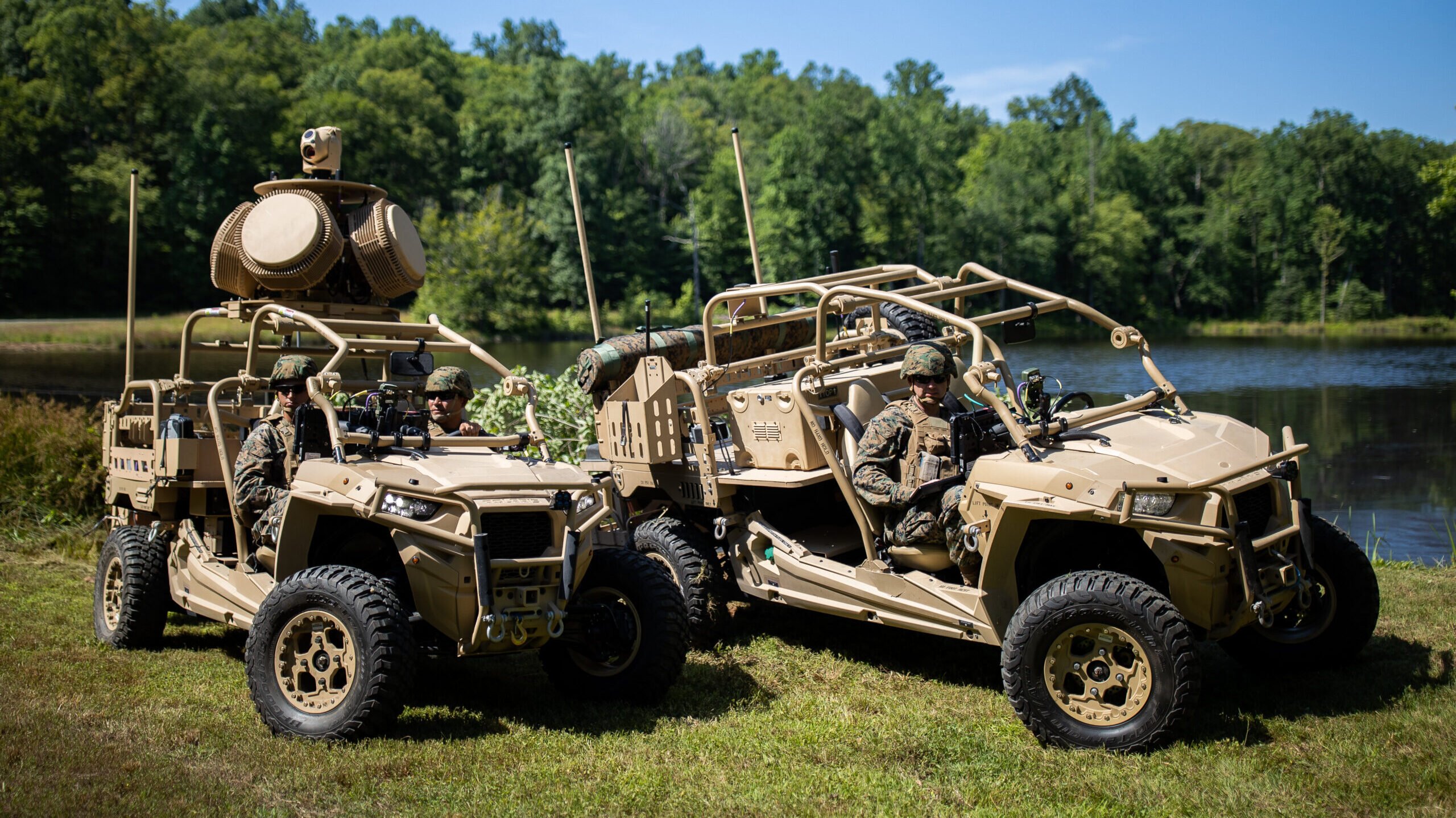
Marines prepare to demonstrate the Light-Marine Air Defense Integrated System (L-MADIS), on Marine Corps Base Quantico, Virginia, June 30, 2021. (U.S. Marine Corps photo by Tia Dufour)
WASHINGTON: The Marine Corps is collecting information from industry this month on potential counter UAS interceptors it can add to the next block of its ground-based air defense vehicle, following up on the Pentagon’s strategy published last year.
The Ground Based Air Defense program office “is interested in interceptor solutions that could be recoverable, field refurbish-able and/or non-recoverable that minimizes cost per engagement of Group 1-3 threats,” according to the public notice. Responses from industry are due on Jan. 20, and the service hopes to field a system by fiscal 2025.
The Pentagon characterizes the sizes of unmanned aircraft into “groups.” Group one represents small handheld drones deployable by just one or two Marines on the ground, while group five aircraft are similar in size to full-scale helicopters.
The interceptors the service is soliciting would be equipped on the Marine Air Defense Integrated System, also called MADIS. MADIS is essentially a Joint Light Tactical Vehicle with an array of sensors, communications equipment and light weaponry that Low Altitude Air Defense Marines, all called LAADs, can use to fight off incoming hostile drones.
The system has proven particularly effective in the Middle East, where terrorist cells have used small UAS for reconnaissance as well as dropping grenades, mortars and “acid,” according to a service statement published in June.
The service is seeking solutions rated at a technology readiness level of seven, according to the RFI. The Pentagon’s technology readiness level scale rates capabilities from one to nine based on their time in development and how applicable they are to the military’s use cases. A seven indicates the system has been prototyped and put through some level of operational testing.
The questions posed by industry, however, suggested the service’s request to defeat group one, two and three UAS with a single interceptor may be impractical due to the range of capabilities some larger drones possess.
“Is it government’s intent that the interceptor provide defeat capability against all Group 3 UAS targets or some specific low-end Group 3 targets?” one vendor asked.
“The ideal situation would be that the interceptor could defeat some Groups [sic] 3 threats but the Government understands that Group 3 targets represent a large range of capability (i.e. altitude/speed). The Government is looking to understand the current state of the art and RFI responses may inform future requirements,” the service replied.
The Marine Corps’ public notice cites the 2021 Pentagon strategy on countering threats from small UAS.
“Small unmanned aircraft systems (sUAS) were previously viewed as hobbyist toys, but today it is evident that the potential for hazards or threats has the ability to impact the Joint Force,” then-acting Defense Secretary Christopher Miller wrote.
“Our initial efforts were intended to meet the immediate needs of Services and combatant commanders. However, as technology and proliferation of sUAS continue to advance at a pace that challenges the Department’s ability to respond effectively within current paradigms, it is evident that we cannot rely on materiel solutions alone,” he continued.
Army closing in on selecting new spy-plane integrator, user assessment around late-2026
HADES is “designed to support active campaigning short of conflict and then potentially support targeting in conflicted areas where you might let high-end stealthy fighters or unmanned systems take first contact,” said Andrew Evans, the ISR Task Force director.



























